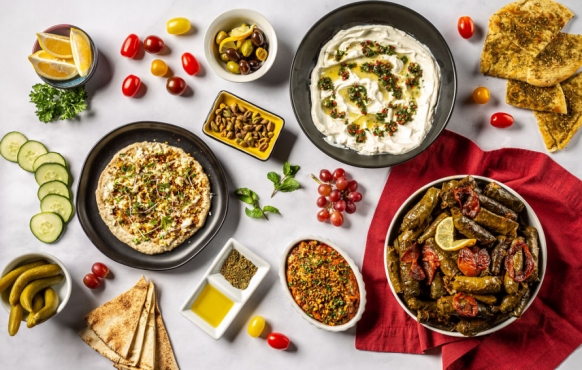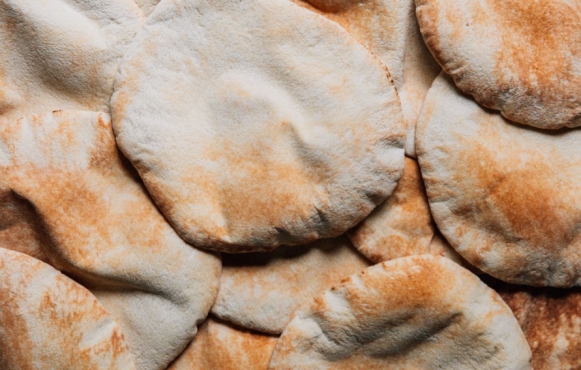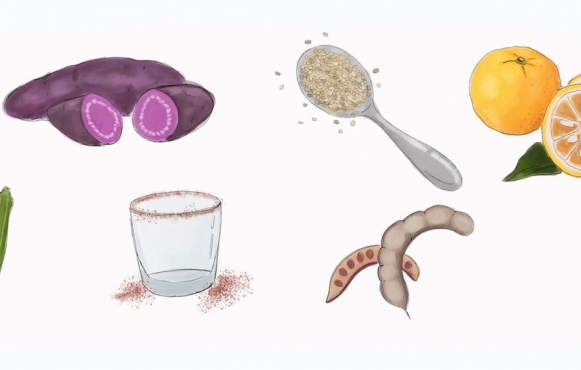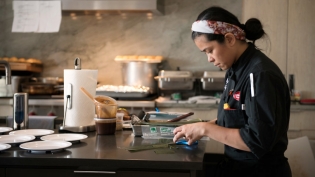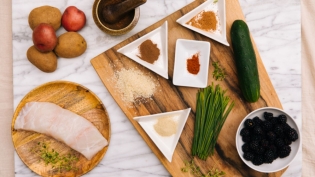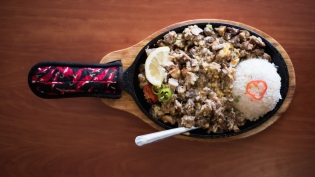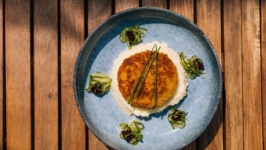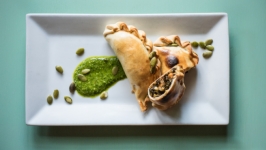
Move. As far as you can, as much as you can. Across the ocean, or simply across the river. Walk in someone else’s shoes, or at least eat their food.
– Anthony Bourdain
As I was researching topics for this issue, I came across a writing standards update in style guides especially relevant to food writers and editors – a decision had been made by many publications to stop italicizing non-English words in food stories. It may seem like a small revision, but removing that visual cue entails a significant shift in thinking, for both writer and reader. There were several factors driving this change. For one thing, italics highlight that a word is different, i.e. negative, and may stigmatize those cuisines and nationalities.
Additionally, global cuisine is becoming more commonplace in U.S. American neighborhoods. Tacos, sushi, macarons, lattes – all were considered exotic at one point in our dining history and have now become familiar imports on local menus. Good-bye italics, hello culinary diversity.
Access to diverse cuisines in your own backyard can be quite the salve during a time of curtailed overseas travel. If we can’t voyage to other lands, at least we can sample the flavors of other cultures, no passport needed. It’s not exactly the same experience as being in Vietnam, India, Latin America or whatever country is on your must-visit list. But if you yearn for travel (and who doesn’t these days?), you can find authentic dishes in local restaurants that will vicariously take you on an epicurean adventure.
The International Eats issue celebrates foods that have found their way across borders to make a home in Northeast Florida. Longing for a taste of Cuba, Vietnam or Ethiopia? We have some helpful tips on how to partake in a culinary journey without hopping on a plane. Wonder what the origins are of some new-to-you ingredients such as ube, benne, jackfruit and Tajín? Take a look at our handy guide on page 48. Read how local agriculture is responding to increased consumer interest in Asian vegetables and enjoy a sip trip highlighting five beverages from around the world. If you want to head into your kitchen to whip up an international feast at home, check out the yummy recipes for a taste of the Middle East – and be sure to pick up some locally baked pita bread, an essential part of any meze feast.
Lucky for us, it is easier than ever to think global and act local when it comes to dining options. We’ll raise a glass of agua fresca to that. And for the team at Edible Northeast Florida, we have one more reason to cheer – this issue marks five years of celebrating the story of local food. We would like to extend our gratitude to our advertisers, whose support enables us to provide this community platform to discuss and showcase our region’s evolving food system. We’re thankful also for our loyal readers, subscribers and contributors who continue to share our vision and commitment to local.
We love to hear about your culinary adventures, so be sure to tag us on social media @edibleneflorida.
**********
STORIES FROM THE INTERNATIONAL EATS ISSUE





